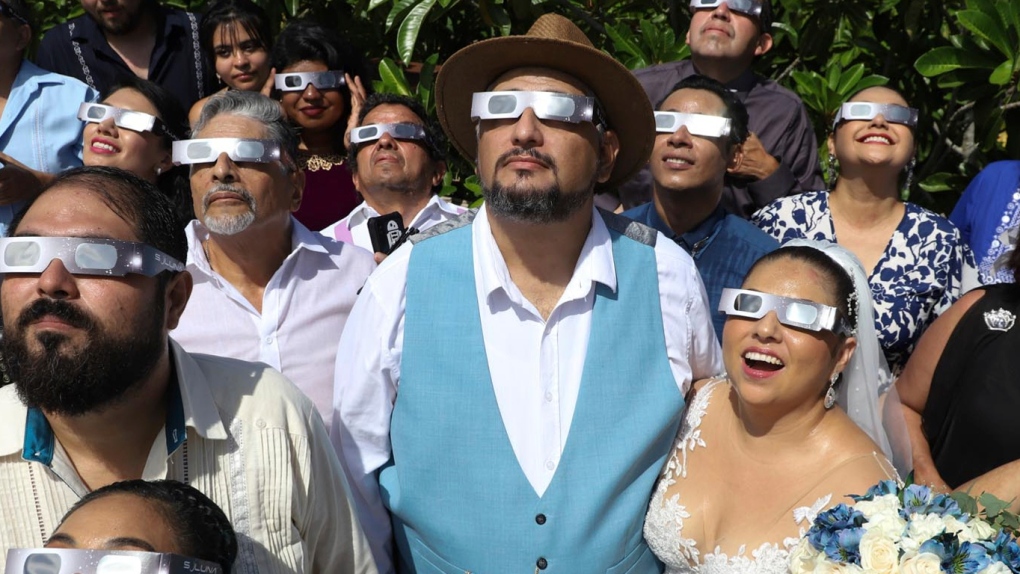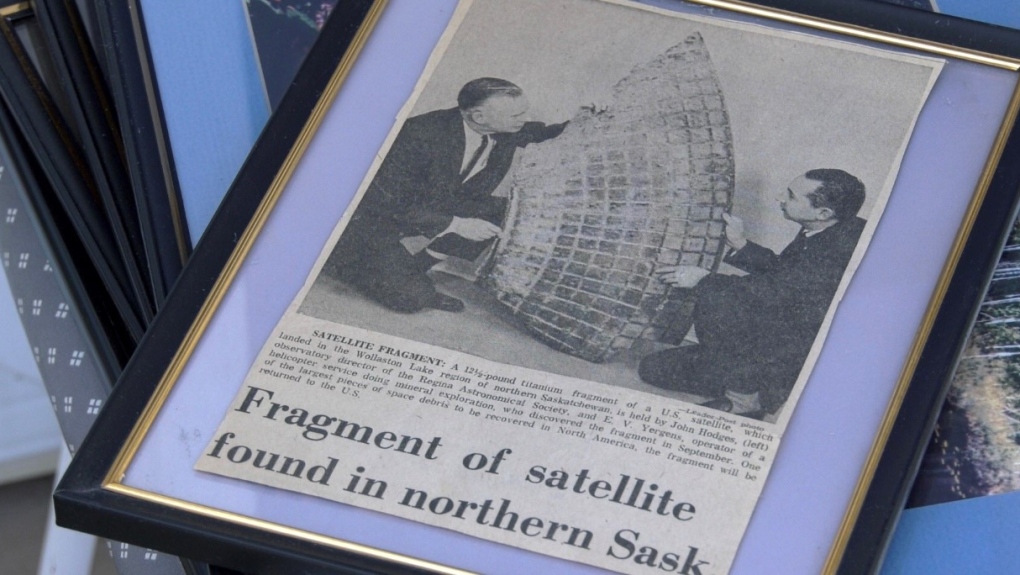Eye-care and astronomy experts are cautioning solar eclipse watchers to protect their eyes with specialized solar filters, handheld solar viewers or eclipse glasses.
People in Canada’s eastern provinces and parts of the United States and Mexico will have the chance to witness a rare total solar eclipse on Monday, April 8.
Eclipse glasses, and other safe solar viewers, use special filters made of black polymer or aluminized polyester to reduce the intensity of the sunlight. They block virtually all light and are thousands of times darker than regular sunglasses, according to NASA and other astronomy experts. People should use International Organization for Standardization’s certified glasses, labelled ISO-12312-2, which meet international safety requirements.
Dr. Shaina Nensi, vice-president of the Ontario Association of Optometrists in Toronto, recommends people get their eclipse viewers or glasses from the list of suppliers provided by the American Astronomical Society.
“If there are scratches or dents on them, then there’s a chance the protective properties could’ve decreased,” she said in a phone interview with CTVNews.ca.
The solar filter or glasses should only allow users to see the sun or light equally bright as the sun, not ordinary objects. “If you can see ordinary light through eclipse glasses or filters, then they’re not safe and put you at high risk of damaging your eyes,” Nensi said.
How to wear glasses
Eclipse glasses should fit snugly enough that wearers can shake their head without them falling off, according to Robert Cockcroft, assistant professor at the department of physics and astronomy at McMaster University in Hamilton, Ont., and secretary of the Canadian Astronomical Society. People who wear prescription glasses should make sure they fit underneath.
He says people may want to experiment wearing just eclipse glasses, and not their prescription spectacles, if that makes them more secure on their face. People can put the filters on first before the glasses if it fully covers their eyes better, Nensi says.
NASA says the only safe time to look at the sun with the naked eye is during the brief phase of totality when the moon completely covers the sun.
“You’ll know it’s safe when you can no longer see any part of the Sun through eclipse glasses or a solar viewer,” NASA wrote on its website. “As soon as you see even a little bit of the bright sun reappear after totality, immediately put your eclipse glasses back on or use a handheld solar viewer to look at the sun.”
However, Nensi says it’s never a good idea to look at the sun without protection, even during the eclipse’s totality. That’s because you could develop solar retinopathy, a condition in which the retina is damaged from looking directly at the sun or another bright light source. Since retinas don’t have pain receptors, people won’t feel pain if they are damaged.
Retinopathy can lead to permanent or temporary blind spots, distortions to vision and the way people see colour, increased light sensitivity, eye pain and grittiness (or feeling like there is sand in your eye), and even complete blindness, Nensi explained.
Nensi recommends people see an optometrist immediately if they experience symptoms, even if they are mild. The symptoms can be irreversible, depending on how long the person stares at the eclipse, she said.
Protecting your skin
If people are watching the eclipse for hours, they may be in direct sunlight during the partial eclipse phases. In that case, they should wear sunscreen, a hat and protective clothing to avoid skin damage, according to NASA.
Warnings about cameras, telescopes and binoculars
Nensi says viewing the sun through cameras, telescopes and binoculars can also increase the chance of damaging your eyes because the lens intensifies light rays.
If people want to use those devices or take photos, use a special lens filter.
“Viewing any part of the bright sun through a camera lens, binoculars, or a telescope without a special-purpose solar filter secured over the front of the optics will instantly cause severe eye injury,” NASA wrote on its website.
As well, it cautioned against looking at the sun through optical devices while wearing eclipse glasses or using a handheld solar viewer because concentrated solar rays could burn through the filter and cause serious eye injury. If proper solar filters are attached to the front of a telescope, binoculars or camera lens, eclipse glasses aren’t needed, according to NASA.
The American Astronomical Society warns people to avoid using solar filters designed to be attached at the back of the telescope where people place their eyes. The optics can magnify the sunlight and instantly injure the eyes, it explained.




